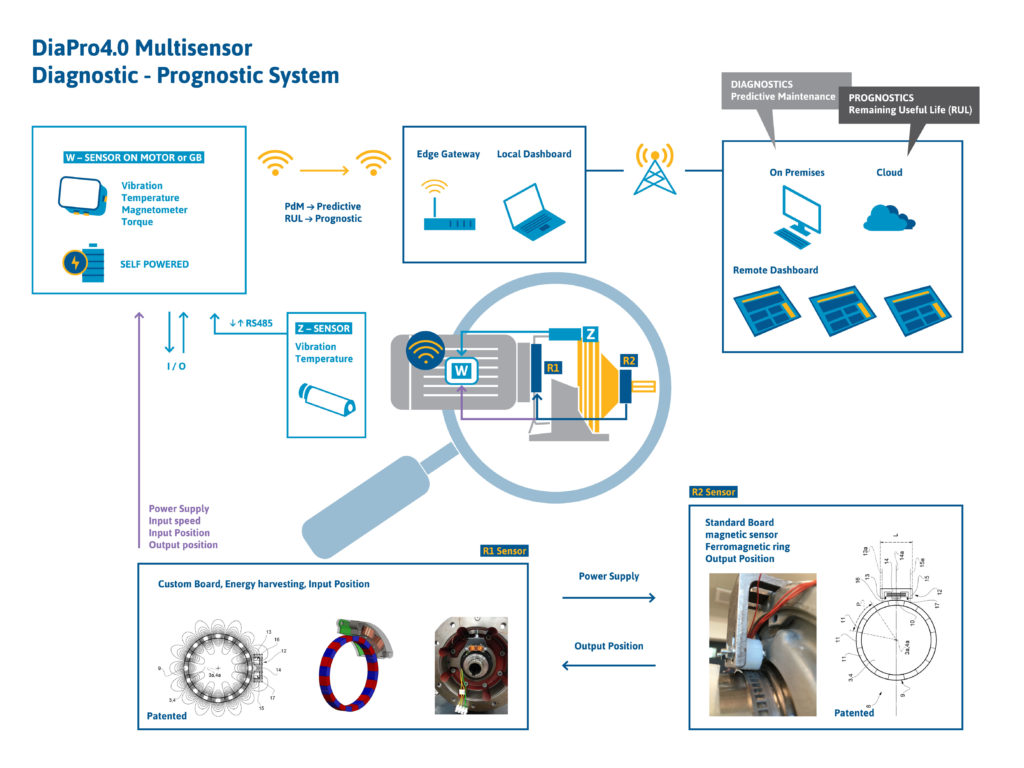DIAPRO 4.0
Cost-effective multisensory Diagnostic-Prognostic system integrated in mechanical drives of Industry 4.0
THE PROJECT
Maintenance advanced systems of the Industry 4.0 are based on predictive maintenance that guarantees remarkable benefits in terms of reliability and safety, and allows the implementation of e-maintenance systems and the development of new business models.
The main characteristic of a predictive maintenance system is the way in which it collects and elaborates signals with the use of advanced diagnostic and prognostic algorithms.
In this sense, the DiaPro4.0 project aims to develop a competitive cost system, integrated in electromechanical drives, able to diagnose faults in rotors, gears, bearings and electric motors, to predict the Remaining Useful Life and to update the models used in the design phase on the basis of the data acquired on the machines in exercise.
The project involves regional laboratories with experience and competence in the field of mechanical transmissions, Diagnostics and Prognostics.
Also two companies take an active part in the project: Bonfiglioli S.p.A and Marposs S.p.A.

